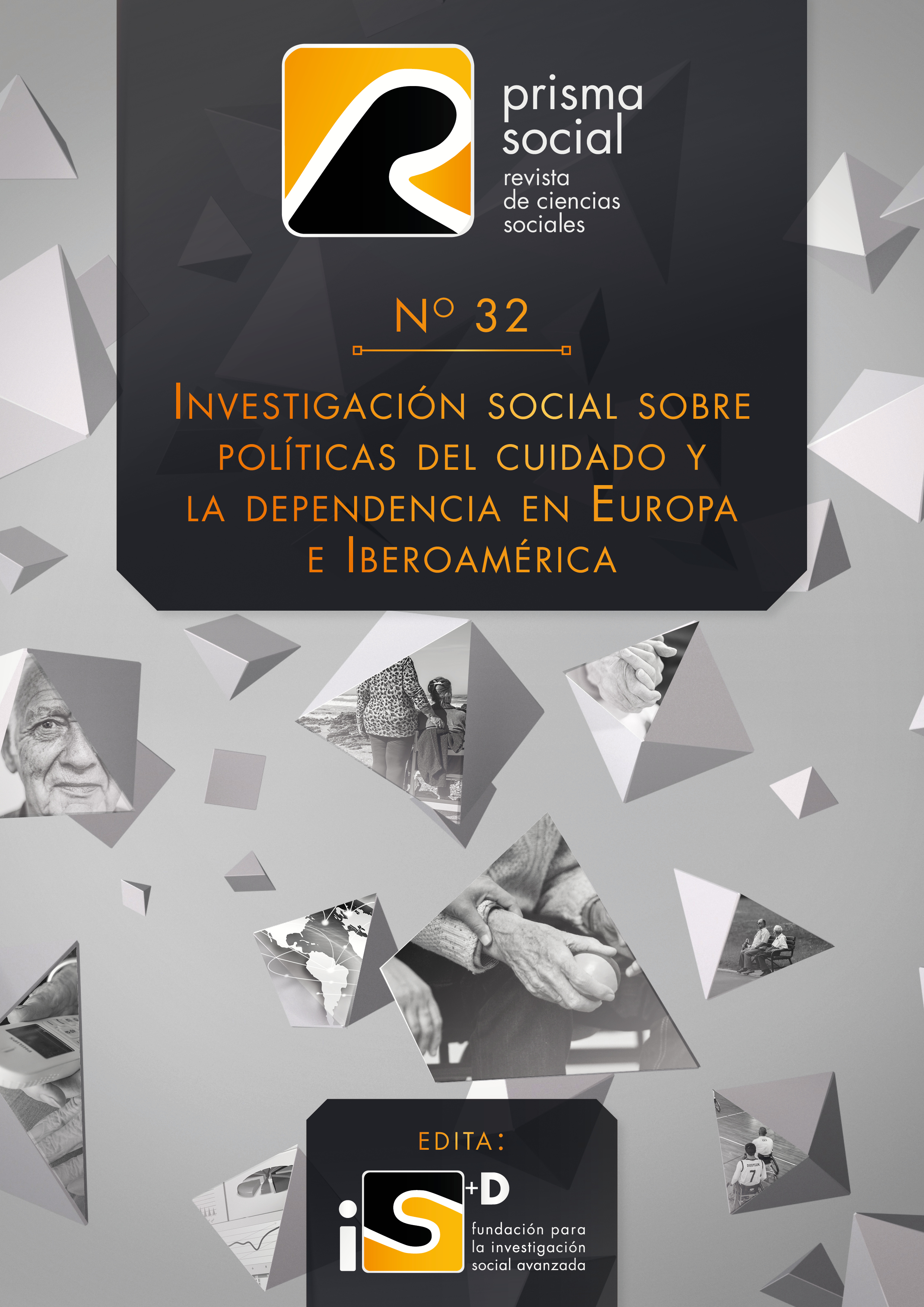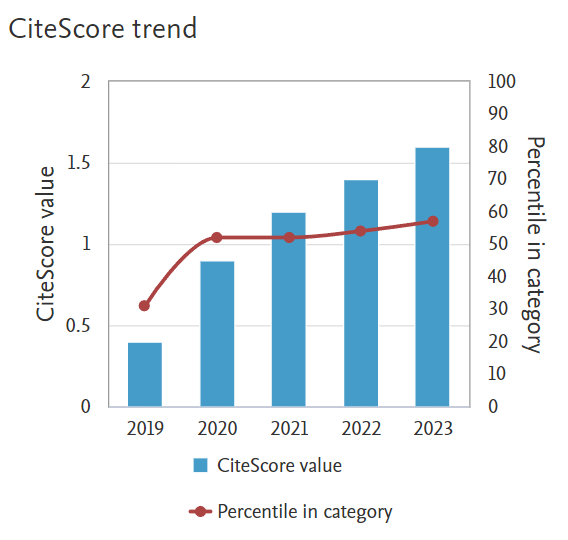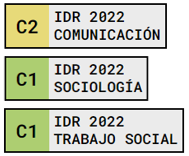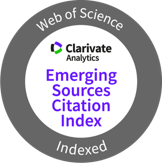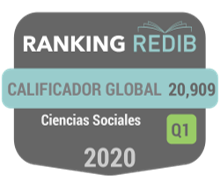Análisis multifactorial de la calidad de vida de la población de mayor edad en Europa
Palabras clave:
Calidad de vida; bienestar; encuesta SHARE; CASP-19; algoritmos supervisados y no supervisados; arboles de decisión; análisis clúster.Resumen
Como es sabido, el aumento de la esperanza de vida supone que más personas alcancen una edad en la que su salud física y mental se puede deteriorar. La vulnerabilidad de estas personas se manifiesta especialmente en la salud, y en la dificultad para satisfacer sus necesidades vitales. Estos hechos, junto al desarrollo del estado del bienestar, hacen necesario estudiar la calidad de vida de estas personas.
Mediante algoritmos supervisados aplicados a la encuesta SHARE (The Survey of Health, Ageing and Retirement in Europe), se identifican los factores principales que explican el bienestar de las personas que se declaran dependientes en Europa, interpretando los resultados mediante Shapley values.
La aportación fundamental proviene del estudio de la relación entre el gasto sanitario y la calidad de vida recogida por el indicador CASP-19. Se aborda el problema desde una doble perspectiva, cualitativa y cuantitativa. No se puede establecer una relación entre la calidad de vida y los sistemas sanitarios europeos (Beveridge, Bismarck o mixto), la naturaleza de quienes suministren el servicio sanitario o el grado de centralización. Sin embargo, desde un punto de vista cuantitativo, se puede concluir que existe relación entre el nivel de gasto público en materia de sanidad y el nivel de bienestar percibido.
Descargas
Citas
AI Wiki, (2020). Supervised, Unsupervised, & Reinforcement Learning. https://docs.paperspace.com/machine-learning/wiki/supervised-unsupervised-and-reinforcement-learning
Amat, J. (2016). Kruskal-Wallis test. RPubs. https://rpubs.com/Joaquin_AR/219504
Aranco, N., Stampini, M., Ibarrarán, P. & Medellín, N. (2018). Panorama de envejecimiento y dependencia en América Latina y el Caribe. Banco Interamericano de Desarrollo. IDB-PB-273. https://publications.iadb.org/publications/spanish/document/Panorama-de-envejecimiento-y-dependencia-en-America-Latina-y-el-Caribe.pdf
Börsch-Supan, A., Brandt, M., Hunkler, C., Kneip, T., Korbmacher, J., Malter, F., Schaan, B., Stuck, S. & Zuber, S. (2013). Data Resource Profile: The Survey of Health, Ageing and Retirement in Europe (SHARE). International Journal of Epidemiology. https://doi.org/10.1093/ije/dyt088
Börsch-Supan, A., Bristle, J., Andersen-Ranberg, K., Brugiavini, A., Jusot, F., Litwin, H. & Weber, G. (eds.). (2019). Health and socio-economic status over the life course: First results from SHARE Waves 6 and 7. De Gruyter. https://doi.org/10.1515/9783110617245
Breiman, L., Friedman, J.H., Olshen, R.A. & Stone, C.J. (1984). Classification and Regression Trees. Taylor & Francis Group. https://doi.org/10.1201/9781315139470
Carrasco-Campos, A., Martínez, L. C., Moreno, A. (2013). Revisión crítica de la medición del bienestar desde una perspectiva interdisciplinar. Prisma Social. Núm. 11 Pág. 91-122. ttp://www.isdfundacion.org/publicaciones/revista/numeros/11/secciones/tematica/pdf/t-04-medicion-bienestar-91-122.pdf
Casas, P., (2019). A gentle introduction to SHAP values in R (R-bloggers). Disponible en: https://www.r-bloggers.com/a-gentle-introduction-to-shap-values-in-r/.
CASP19. (2020). https://casp19.com/background
Comisión Europea (CE). (2000). Carta de los Derechos Fundamentales de la Unión Europea. https://eur-lex.europa.eu/eli/treaty/char_2016/oj
Comisión Europea (CE). (2010). Tratado de funcionamiento de la Unión Europea. https://eur-lex.europa.eu/legal-content/ES/TXT/PDF/?uri=CELEX:12012E/TXT&from=ES
Comisión Europea (CE). (2017). Pilar europeo de derechos sociales. https://www.educacionyfp.gob.es/dam/jcr:914b1a2e-a293-495d-a51d-95006a47f148/EPSR-booklet_es.pdf
Comisión Europea (CE). (2020). https://ec.europa.eu/social/main.jsp?langId=es&catId=1137
Encuesta de Salud, Envejecimiento y Jubilación en Europa (SHARE), (2020). http://www.share-project.org/home0.html
Gaeta, M., Campanella, F., Capasso, L., Schifino, G.M., Gentile, L., Banfi, G., Pelissero, G. & Ricci, C. (2017). An overview of different health indicators used in the European Health Systems. Journal of Preventive Medicine and Hygiene. 58,2. https://www.ncbi.nlm.nih.gov/pmc/articles/PMC5584080/pdf/2421-4248-58-E114.pdf
Han, J., (2020). Distance between Categorical Attributes Ordinal Attributes and Mixed Types. Coursera. https://www.coursera.org/lecture/cluster-analysis/2-4-distance-betweencategorical-attributes-ordinal-attributes-and-mixed-types-KnvRC
Hyde, M., Higgs, P., Wiggins, RD. & Blane, D. (2015). A decade of research using the CASP scale: key findings and future directions. Aging Ment Health, Jul;19(7):571-5. https://doi.org/10.1080/13607863.2015.1018868
Juliá, R. (2016). Validez del indicador general de limitación de la actividad (GALI) para medir funcionamiento en la población. Un análisis comparativo con salud percibida, a través de encuestas de salud de España. Universidad de Alicante. https://rua.ua.es/dspace/bitstream/10045/68918/7/tesis_rocio_julia_sanchis.pdf
Kassambara, A. (2017). Factor Analysis of Mixed Data in R: Essentials. Statistical tools for high-throughput data analysis. http://www.sthda.com/english/articles/31-principal-componentmethods-in-r-practical-guide/115-famd-factor-analysis-of-mixed-data-in-r-essentials/
Molnar, C. (2020). Interpretable Machine Learning: A Guide for Making Black Box Models. Explainable. Bookdown. https://christophm.github.io/interpretable-ml-book/shapley.html
Oficina Europea de Estadística (Eurostat), (2020). Population structure and ageing. https://ec.europa.eu/eurostat/statisetics-explained/index.php?title=Population_structure_and_ageing/es
Orellana, J. (2018). Árboles de decisión y Random Forest. Bookdown. https://bookdown.org/content/2031/arboles-de-decision-parte-i.html
Organización Mundial de la Salud (OMS), (2001). Clasificación Internacional del Funcionamiento, las Discapacidades y la Salud (CIF). https://www.imserso.es/InterPresent2/groups/imserso/documents/binario/435cif.pdf
Organización Mundial de la Salud (OMS), (2018). https://www.who.int/es/news-room/fact-sheets/detail/disability-and-health
Pathak, M. (2018). Feature Selection in R with the Boruta R Package. Datacamp. https://www.datacamp.com/community/tutorials/feature-selection-Rboruta
Progress Consulting S.r.l. & Living Prospects Ltd. (2012). The management of health systems in the EU Member States - The role of local and regional authorities. https://doi.org/ 10.2863/83500
Reusova, A., (2018). Hierarchical Clustering on Categorical Data in R. Towards Data Science. https://towardsdatascience.com/hierarchical-clustering-on-categoricaldata-in-r-a27e578f2995
Rodríguez, V., Rodríguez-Mañas, L., Sancho, M. & Díaz, R. (2012). Envejecimiento. La investigación en España y Europa. Revista Española de Geriatría y Gerontología. 47(4):174–179. https://doi.org/10.1016/j.regg.2012.02.005
Soldi, R. (2017). The management of health systems in the EU Member States. The role of local and regional authorities. European Committee of the Regions. European Union. https://op.europa.eu/en/publication-detail/-/publication/239062df-cb4b-11e7-a5d5-01aa75ed71a1/language-en
Teknomo, K. (2015). Normalized Rank Transformation. Revoledu. https://people.revoledu.com/kardi/tutorial/Similarity/Normalized-Rank.html
Tibshirani, R., Walther, G. & Hastie, T. (2000). Estimating the number of clusters in a data set via the gap statistic. Journal of the Royal Statistical Society. https://doi.org/10.1111/1467-9868.00293
Tseng, G. (2018). Interpreting complex models with SHAP values. Medium. https://medium.com/@gabrieltseng/interpreting-complex-models-withshap-values-1c187db6ec83c
AI Wiki, (2020). Supervised, Unsupervised, & Reinforcement Learning. https://docs.paperspace.com/machine-learning/wiki/supervised-unsupervised-and-reinforcement-learning
Amat, J. (2016). Kruskal-Wallis test. RPubs. https://rpubs.com/Joaquin_AR/219504
Aranco, N., Stampini, M., Ibarrarán, P. & Medellín, N. (2018). Panorama de envejecimiento y dependencia en América Latina y el Caribe. Banco Interamericano de Desarrollo. IDB-PB-273. https://publications.iadb.org/publications/spanish/document/Panorama-de-envejecimiento-y-dependencia-en-America-Latina-y-el-Caribe.pdf
Börsch-Supan, A., Brandt, M., Hunkler, C., Kneip, T., Korbmacher, J., Malter, F., Schaan, B., Stuck, S. & Zuber, S. (2013). Data Resource Profile: The Survey of Health, Ageing and Retirement in Europe (SHARE). International Journal of Epidemiology. https://doi.org/10.1093/ije/dyt088
Börsch-Supan, A., Bristle, J., Andersen-Ranberg, K., Brugiavini, A., Jusot, F., Litwin, H. & Weber, G. (eds.). (2019). Health and socio-economic status over the life course: First results from SHARE Waves 6 and 7. De Gruyter. https://doi.org/10.1515/9783110617245
Breiman, L., Friedman, J.H., Olshen, R.A. & Stone, C.J. (1984). Classification and Regression Trees. Taylor & Francis Group. https://doi.org/10.1201/9781315139470
Carrasco-Campos, A., Martínez, L. C., Moreno, A. (2013). Revisión crítica de la medición del bienestar desde una perspectiva interdisciplinar. Prisma Social. Núm. 11 Pág. 91-122. ttp://www.isdfundacion.org/publicaciones/revista/numeros/11/secciones/tematica/pdf/t-04-medicion-bienestar-91-122.pdf
Casas, P., (2019). A gentle introduction to SHAP values in R (R-bloggers). Disponible en: https://www.r-bloggers.com/a-gentle-introduction-to-shap-values-in-r/.
CASP19. (2020). https://casp19.com/background
Comisión Europea (CE). (2000). Carta de los Derechos Fundamentales de la Unión Europea. https://eur-lex.europa.eu/eli/treaty/char_2016/oj
Comisión Europea (CE). (2010). Tratado de funcionamiento de la Unión Europea. https://eur-lex.europa.eu/legal-content/ES/TXT/PDF/?uri=CELEX:12012E/TXT&from=ES
Comisión Europea (CE). (2017). Pilar europeo de derechos sociales. https://www.educacionyfp.gob.es/dam/jcr:914b1a2e-a293-495d-a51d-95006a47f148/EPSR-booklet_es.pdf
Comisión Europea (CE). (2020). https://ec.europa.eu/social/main.jsp?langId=es&catId=1137
Encuesta de Salud, Envejecimiento y Jubilación en Europa (SHARE), (2020). http://www.share-project.org/home0.html
Gaeta, M., Campanella, F., Capasso, L., Schifino, G.M., Gentile, L., Banfi, G., Pelissero, G. & Ricci, C. (2017). An overview of different health indicators used in the European Health Systems. Journal of Preventive Medicine and Hygiene. 58,2. https://www.ncbi.nlm.nih.gov/pmc/articles/PMC5584080/pdf/2421-4248-58-E114.pdf
Han, J., (2020). Distance between Categorical Attributes Ordinal Attributes and Mixed Types. Coursera. https://www.coursera.org/lecture/cluster-analysis/2-4-distance-betweencategorical-attributes-ordinal-attributes-and-mixed-types-KnvRC
Hyde, M., Higgs, P., Wiggins, RD. & Blane, D. (2015). A decade of research using the CASP scale: key findings and future directions. Aging Ment Health, Jul;19(7):571-5. https://doi.org/10.1080/13607863.2015.1018868
Juliá, R. (2016). Validez del indicador general de limitación de la actividad (GALI) para medir funcionamiento en la población. Un análisis comparativo con salud percibida, a través de encuestas de salud de España. Universidad de Alicante. https://rua.ua.es/dspace/bitstream/10045/68918/7/tesis_rocio_julia_sanchis.pdf
Kassambara, A. (2017). Factor Analysis of Mixed Data in R: Essentials. Statistical tools for high-throughput data analysis. http://www.sthda.com/english/articles/31-principal-componentmethods-in-r-practical-guide/115-famd-factor-analysis-of-mixed-data-in-r-essentials/
Molnar, C. (2020). Interpretable Machine Learning: A Guide for Making Black Box Models. Explainable. Bookdown. https://christophm.github.io/interpretable-ml-book/shapley.html
Oficina Europea de Estadística (Eurostat), (2020). Population structure and ageing. https://ec.europa.eu/eurostat/statisetics-explained/index.php?title=Population_structure_and_ageing/es
Orellana, J. (2018). Árboles de decisión y Random Forest. Bookdown. https://bookdown.org/content/2031/arboles-de-decision-parte-i.html
Organización Mundial de la Salud (OMS), (2001). Clasificación Internacional del Funcionamiento, las Discapacidades y la Salud (CIF). https://www.imserso.es/InterPresent2/groups/imserso/documents/binario/435cif.pdf
Organización Mundial de la Salud (OMS), (2018). https://www.who.int/es/news-room/fact-sheets/detail/disability-and-health
Pathak, M. (2018). Feature Selection in R with the Boruta R Package. Datacamp. https://www.datacamp.com/community/tutorials/feature-selection-Rboruta
Progress Consulting S.r.l. & Living Prospects Ltd. (2012). The management of health systems in the EU Member States - The role of local and regional authorities. https://doi.org/ 10.2863/83500
Reusova, A., (2018). Hierarchical Clustering on Categorical Data in R. Towards Data Science. https://towardsdatascience.com/hierarchical-clustering-on-categoricaldata-in-r-a27e578f2995
Rodríguez, V., Rodríguez-Mañas, L., Sancho, M. & Díaz, R. (2012). Envejecimiento. La investigación en España y Europa. Revista Española de Geriatría y Gerontología. 47(4):174–179. https://doi.org/10.1016/j.regg.2012.02.005
Soldi, R. (2017). The management of health systems in the EU Member States. The role of local and regional authorities. European Committee of the Regions. European Union. https://op.europa.eu/en/publication-detail/-/publication/239062df-cb4b-11e7-a5d5-01aa75ed71a1/language-en
Teknomo, K. (2015). Normalized Rank Transformation. Revoledu. https://people.revoledu.com/kardi/tutorial/Similarity/Normalized-Rank.html
Tibshirani, R., Walther, G. & Hastie, T. (2000). Estimating the number of clusters in a data set via the gap statistic. Journal of the Royal Statistical Society. https://doi.org/10.1111/1467-9868.00293
Tseng, G. (2018). Interpreting complex models with SHAP values. Medium. https://medium.com/@gabrieltseng/interpreting-complex-models-withshap-values-1c187db6ec83c
Descargas
Publicado
Cómo citar
Número
Sección
Licencia
Los autores/as que publiquen en esta revista aceptan las siguientes condiciones:
- Los autores/as conservan los derechos de autor.
- Los autores/as ceden a la revista el derecho de la primera publicación. La revista también posee los derechos de edición.
- Todos los contenidos publicados se regulan mediante una Licencia Atribución/Reconocimiento-SinDerivados 4.0 Internacional. Acceda a la versión informativa y texto legal de la licencia. En virtud de ello, se permite a terceros utilizar lo publicado siempre que mencionen la autoría del trabajo y a la primera publicación en esta revista. Si transforma el material, no podrá distribuir el trabajo modificado.
- Los autores/as pueden realizar otros acuerdos contractuales independientes y adicionales para la distribución no exclusiva de la versión del artículo publicado en esta revista (p. ej., incluirlo en un repositorio institucional o publicarlo en un libro) siempre que indiquen claramente que el trabajo se publicó por primera vez en esta revista.
- Se permite y recomienda a los autores/as a publicar su trabajo en Internet (por ejemplo en páginas institucionales o personales), una vez publicado en la revista y citando a la misma ya que puede conducir a intercambios productivos y a una mayor y más rápida difusión del trabajo publicado (vea The Effect of Open Access).

